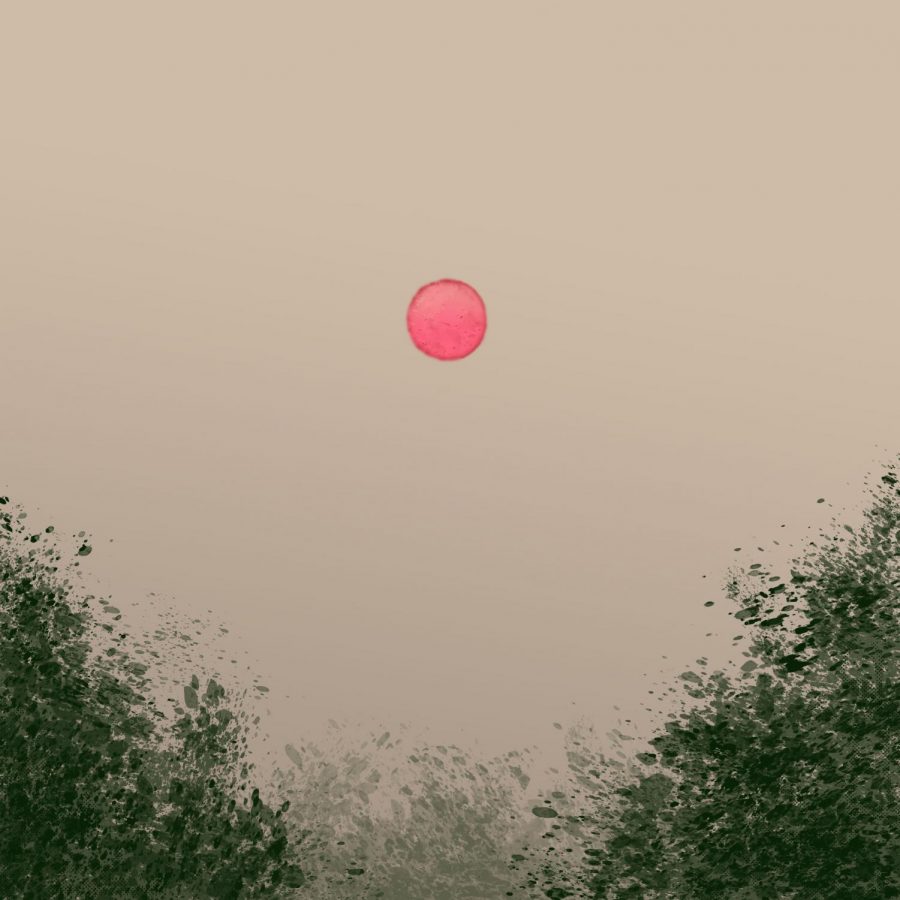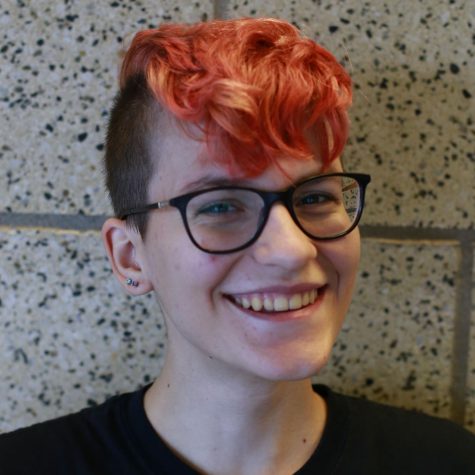Burning Up
THE SUMMER OF RED SUNS. Illustration by Mimi Gaudiano. One of the striking aspects of the forest fires was the bright red sun. Senior Cheyanne Ferrall describes her experience this last summer, “I knew several people who couldn’t go outside for very long because of asthma. In Port Orchard you could no longer see Seattle from the other side of the water, the whole city was just gone.”
September 28, 2018
A single smoldering cigarette butt, fireworks blazing across the dark sky, a bonfire fueling summertime fun. All are human indulgences, used in situations where we take the tremendous power of fire, and tame it to the size we enjoy. Fire is beautiful, fire is warm, and fire is dangerous. When we are not responsible enough to properly deal with the power we have been given, it can get out of hand and its damages can be seen through what we all experienced in the summer of 2018.
A red sun hangs among the backdrop of a smoky haze of a sky. The air is dry and feels like second-hand smoke from the world’s largest cigarette, puffed by a giant in the sky. Ash is gently carried onto cars and through open windows from mid-afternoon breezes. Where did the crisp Washington air go? Nothing compares to the first breath after a rain. The wet pavement, the fresh air are both signature Washington scents. The forest fires robbed the people of these senses, cancelled outdoor plans, and brought a haze over the state. How did these fires start? Where were they burning? Now that fall rains and cold temperatures have brought back the usual Washington atmosphere, we can fully understand what happened to the air in the summer of burning forests and scarlet suns.
It all started on June 1. According to the Seattle Times’ article, “Weekend lightning, wind spread wildfires across Washington state,” the combination of an “already dry landscape” and the simple strike of lightning set the area on fire. These flames then were spread by winds to places all over eastern Washington. According to freshman Charolette Dennie, she says, “I was going down to my cousin’s cabin, and while driving down, I saw these mountains with fire on them.” She observed the fires taking place with her own eyes while passing through eastern Washington. On July 31 governor Jay Inslee put Washington in a state of emergency in his “Proclamation by the Governor.” Junior Lucas Narisawa guessed the location of the fires while commenting on the smoke, saying, “ The smoke came from eastern Washington. The air quality health index around the Chelan area went above 400, which is hazardous.” Wildfires were popping up all over the state, according to Washington Smoke Information, there were fires in places like, Holman, Crescent Mountain, Miriam and Cougar Creek.
Although Washington was “burning up,” many people here got the short-hand of the flaming stick, for the biggest problem in Issaquah was not fire, but smoke. Narisawa, says, “I live in The Highlands. You can usually see places like Poo Poo Point from where I live, but when the smoke was there, I couldn’t see it. I mean, it just looked like fog to be honest.” Sophomore Justin Chang describes the smoke, saying, “It was really smoky and cloudy. I’ve been to China before and the air here was even worse.” The air was like a haze that laid itself upon Issaquah. Cancelling plans and rescheduling summertime fun, the smoke was a danger to the asthma prone and people with sensitive eyes. According to the article, “Worst air quality of the year due to wildfire smoke across Puget Sound” by King5 News said, “Puget Sound Clean Air Agency said these were the highest particulate levels so far this summer. The air quality in Western Washington reached ‘unhealthy for everyone’ to ‘very unhealthy for everyone’ SWednesday morning at most monitoring sites.” Air was the worst it may have ever been in Washington for a very long time.
As a society, we may not be able to stop lightning, but we can stop human caused forest fires. Junior Dianne Caras believes one way to stop fires is “not smoking in forests. Or at least in dry areas. Make sure that if you plan to do fire things, do it in safe areas that are permitted to flames and make sure you put it out.” Senior Cheyanne Ferrall says, “Be more environmentally responsible in general. Produce less greenhouse gases, the works.” A major aspect to helping avoid what happened this summer can be simply not breaking the rules. In parks and forests all over the Washington State, fire bans were put up, asking park goers to not use open flame fires or charcoal. But of course, no one likes rules, no one likes bans. Many people broke the fire ban this summer, and these wildfires may not have been all human caused, but when our state is in danger, we have a responsibility to follow. What would Smokey the Bear, the mascot of national parks, think of your unattended fires? Now that summer has officially ended, and pumpkins are rolling back into the scene, we can put the memories of the forest fires behind us, but we should not forget the damage done. The fires are over, for now. Let us make 2019 a hot summer, not a fiery one.




